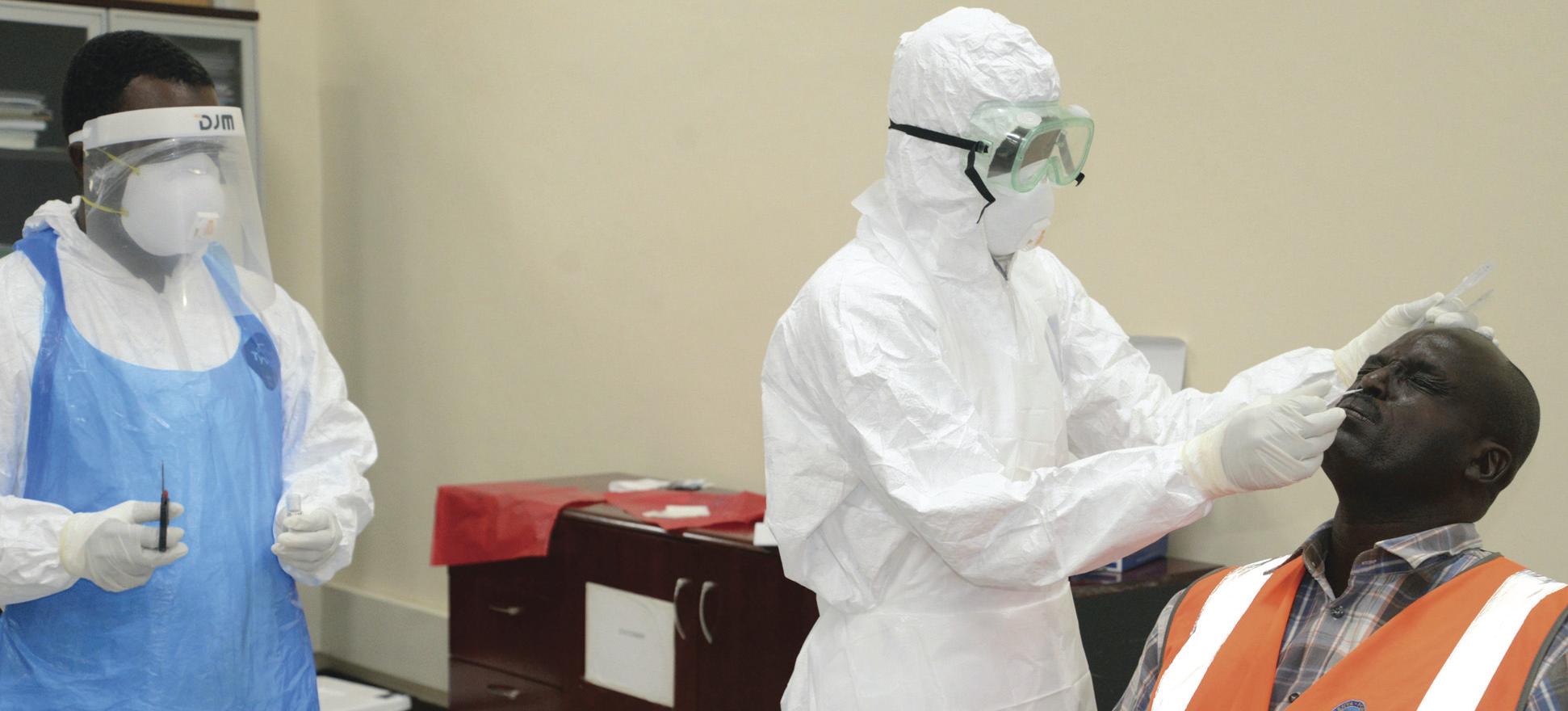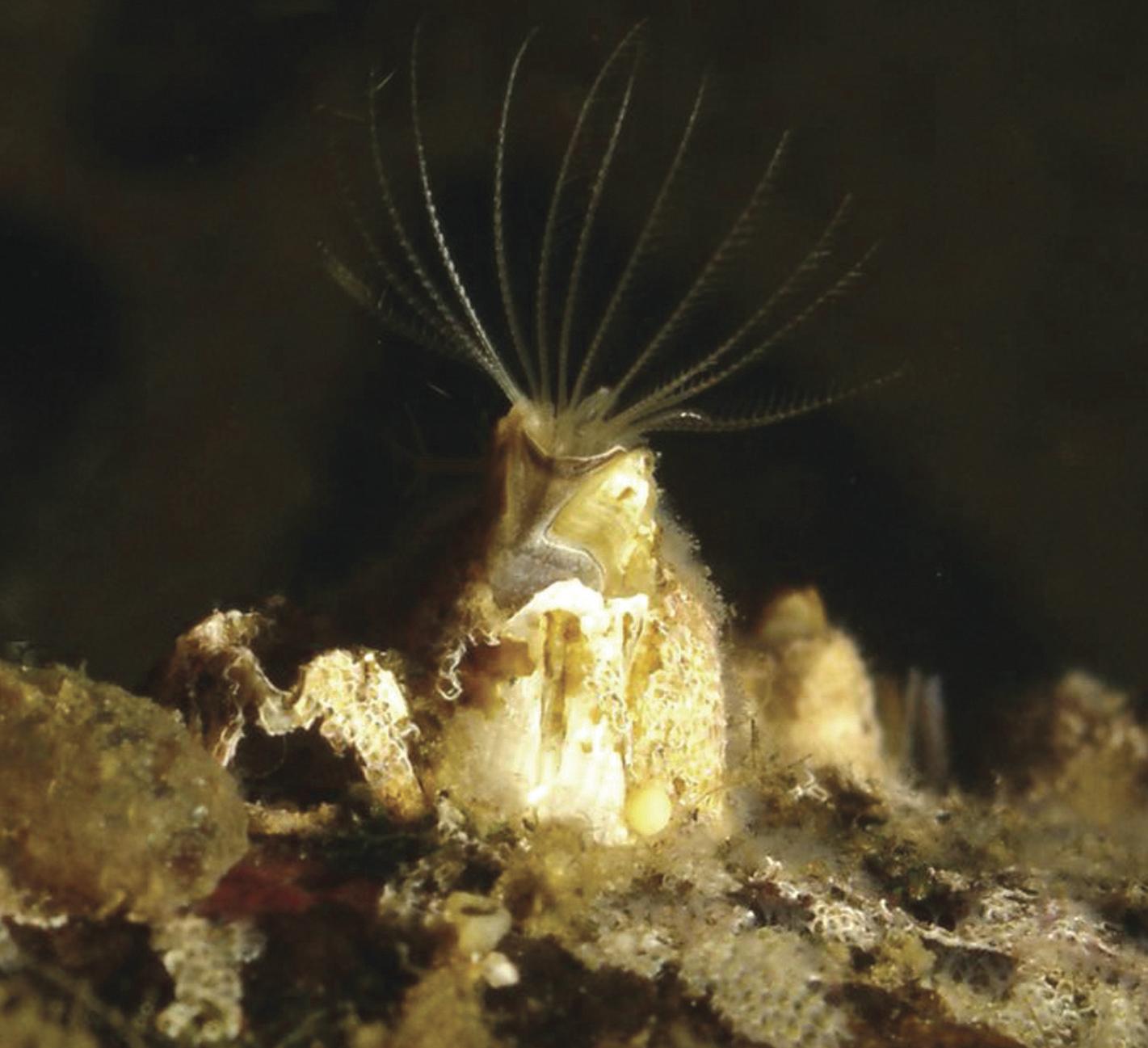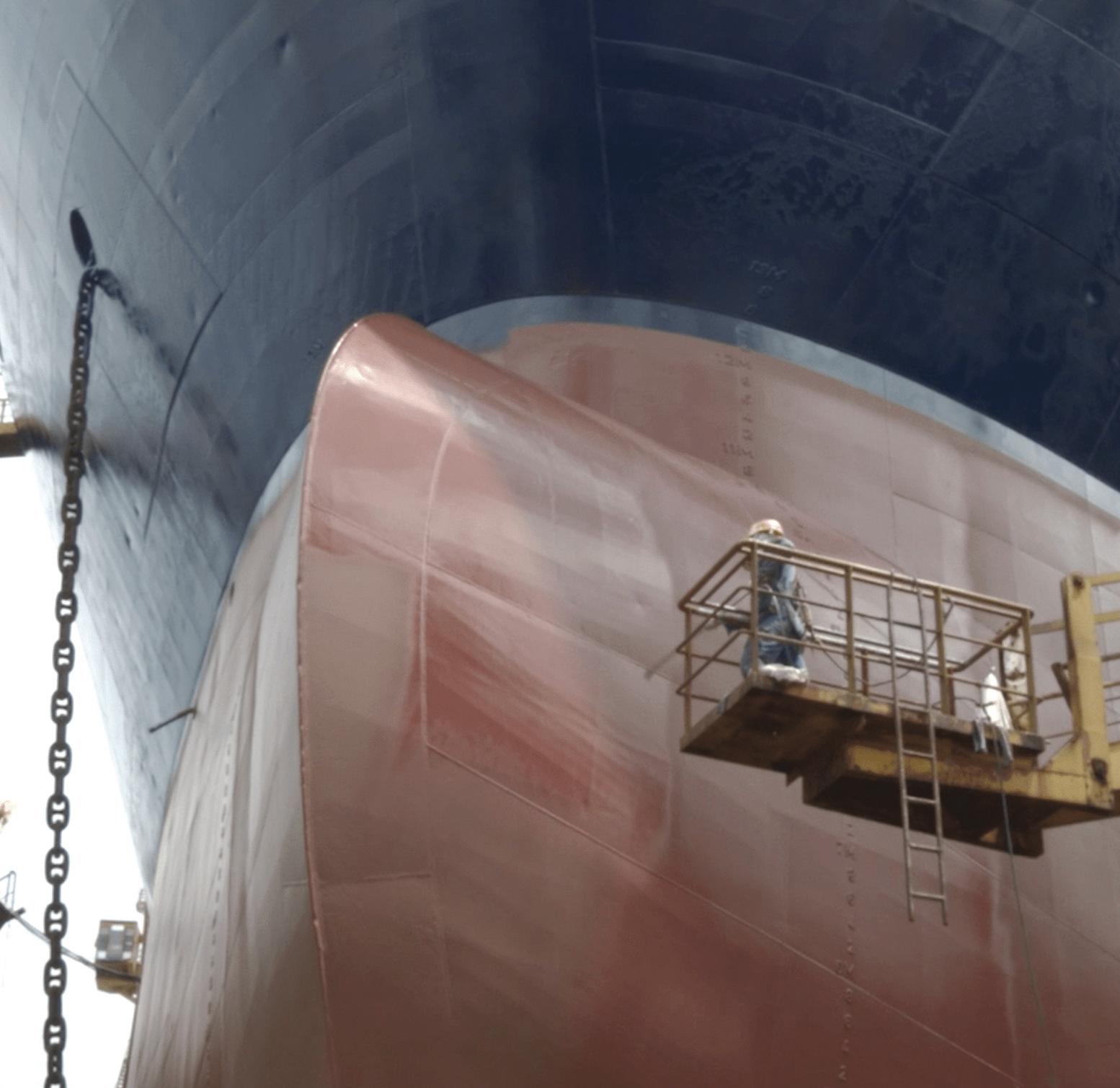
10 minute read
Africa Focus
COVID-19 IMPACTS PORT OPERATIONS
East Africa's biggest port Mombasa has been labelled as a hotspot for Covid-19, but it is fighting back with increased efficiency writes Shem Oirere
Photo: KPA
At the beginning of the pandemic, Kenya Ports Authority (KPA), which operates the Port of Mombasa, was forced to suspend all operations except core ones of loading and unloading of exports and imports. This was following two senior staff succumbing to Covid-19 related complications and several others being found to be in infected.
The Kenyan government, working with other East Africa Community (EAC) State partners, including Tanzania and Uganda, also promulgated new regulations for truckers picking and dropping cargo at Mombasa so as to enhance safety of drivers and reduce chances of spreading the Covid-19 infections across the East African region.
Entry of truckers to the Port of Mombasa was banned for drivers who have not been tested and issued with Covid-19 free certificate within 48 hours of entry.
REDUCED OPERATIONS, INCREASED EFFICIENCY
Normally the port handles annual container traffic of more than 1.4 million teu with an estimated total of 31.479 million tonnes of cargo. It is the main gateway for exports and imports for the rest of East Africa with transit cargo going to Uganda (82%), South Sudan (7.6%), Democratic Republic of Congo (4.9%), Tanzania (2.6%), Rwanda (2.4%) and Burundi (0.2%).
In order to keep cargo moving, the port management has launched measures such as scheduled fumigation of key equipment, operation areas, offices and workshops to keep cargo passing through the port.
And it has streamlined its operations in the process becoming more efficient and greener in a number of ways.
“We have enabled our online cargo documentation processes to facilitate our customers to clear cargo electronically and decongest human traffic within the port,” says Mr Rashid Salim, acting managing director KPA.
In addition, ships docking at the Port of Mombasa are now required “to declare their crew health status and the last ten ports of call.”
“Those that came from countries infected by coronavirus are subjected to rigorous inspection and crews are not allowed to get off the vessel,” Mr Salim adds.
GREEN ISSUES
Mr Salim says KPA will insist on strict compliance with the international treaty for garbage control at sea, referred to also as MARPOL 73/78 Annex V for all vessels especially those from high rates of Covid-19.
“Garbage from vessels arriving from confirmed Covid-19 countries will not be allowed to be discharged at any Kenyan port,” he says.
At the moment the Port of Mombasa does not have adequate facilities to handle waste from ships although a comprehensive waste management plan for the port is in the works.
The number of vessels calling at the Port of Mombasa has been increasing with KPA reporting 1,696 vessels in 2018/2019 up from the previous 1,661 vessels. Although this translates into more marine revenue it also exerts pressure on KPA to effectively address likely surge of ship waste.
Mr Salim also warns that the suspension of operations at the port except for the loading and unloading of imports and exports because of Covid-19 could impact delivery levels of its Green Port Policy activities This includes projects such as the Mombasa Resilient Infrastructure Programme that includes environmental interventions in the water sector.
8 Health personnel
extracting nose samples from a KPA employee during a Covid-19 testing exercise at the port of Mombasa
CLEAN TECHNOLOGY POST-PANDEMIC
Three clean tech companies have united to debate environmental efficiency in the post-pandemic era, reports Anne-Marie Causer
With the global transportation sectors continuing to suffer the effects of the measures enforced by governments worldwide to minimise the spread of the pandemic, the optimisation of vessel efficiency already has and will play a crucial role in ensuring the commercial buoyancy of the sector going forward.
That is the view of a recent online debate held by three big players in the Swedish clean-tech sector.
Swedish clean technology innovators Lean Marine Sweden AB, I-Tech AB and PowerCell Sweden AB are of the view that economic recovery will not be instantaneous and that maintaining a financially and environmentally sustainable business will be a bigger challenge than ever before.
During a virtual industry discussion on 13 May, the trio discussed how antifouling coatings and marine fuel cells, among other things, will play an integral part in the marine sector's recovery.
BIOFOULING CHALLENGE
During the webinar, Philip Chaabane, CEO, I-Tech, discussed some of his concerns about biofouling control and what happens when ships sit still for too long, as has been the case for some during lockdown.
“Idling is a huge risk for ships when it comes to barnacle colonisation on the hull. With the number of ships idling increased due to current lack of need for goods transportation during the pandemic, the probability that a huge number of ships will have barnacle fouling below the waterline is very high,” he said.
Mr Chaabane explained that a ship's hull is instantaneously occupied by macro molecules, be these sugars or proteins. Then, microbial fouling occurs which is caused by one cell organisms that create a slime layer - this slime layer can arise quickly, in a matter of hours.
After a few weeks tertiary colonisers come in - this includes barnacles. If idling goes on for longer, for months at a time, all sorts of animal fouling can populate the hull including weeds and molluscs.
The way to prevent biofouling is the use of antifouling coatings he said.
“The better they are, the better they will prevent fouling. For this technology area there are no shortcuts and no cheap
Idling is a huge risk for ships when it comes to barnacle colonisation on the hull. With the number of ships idling increased due to current lack of need for goods transportation during the pandemic, the probability that a huge number of ships will have barnacle fouling below the waterline is very high - Philip Chaabane

solutions that can be found to resist biofouling. However, since the ROI case is very attractive for antifouling coatings, they are a good long-term investment.”
New research commissioned by I-Tech, conducted by the Safinah Group, found that a lot of ships surveyed at drydock (249 ship sample size between 2015-2019) pre-pandemic were fouled by barnacles. In fact, 44% of vessels surveyed had more than 10% coverage of barnacle fouling - a lot under usual business conditions.
Imagine what that sample would look like when surveyed at their next drydockings post-pandemic, barnacle fouling will be a lot higher for a lot more vessels due to increased idling (barnacles only strike when a ship is sat still).
Barnacles cause huge hydrodynamic drag problems which means less efficiency, more fuel consumption and more emissions, so fouling is an important issue to get to grips with post pandemic.
Going forward, Mr Chaabane said that regulation will help drive the increased use of advanced antifouling technology. Biofouling management enforcement is currently only served by guidelines from the IMO. However, on a regional basis and even port by port there are stricter regulations being enforced all over the world.
Some vessels have been turned away due to having too much fouling and posing too high risk of transporting IAS into the ecosystem. Owners of these vessel have had to sail their vessels away to undergo hull cleaning, with great added expenses and delay to cargo delivery/pick up schedules.
8 Idling is a huge risk
for ships when it comes to barnacle colonisation on the hull
CO2 emission reduction targets are also a driver for advanced antifouling coatings requirement. From the hull alone, the around 100 million tonnes of CO2 could be saved per year based on a 10% fuel saving unlocked from premium antifouling coatings use across the global fleet.
ZERO-EMISSIONS VESSELS
Johan Burgren, business manager, PowerCell, discussed the role that zero-emission vessels, including hydrogen powered ones, will play in the run up to IMO targets on reducing greenhouse emissions by 2050.
“Zero-emission vessels may have to set sail around 2030,” he said. “Therefore, hydrogen fuel cell technology is now in spotlight for ship owners and operators since this decade is the right time for zero -emission vessel projects to be hitting the water to achieve IMO targets in 2050.”
A hydrogen fuel cell works by hydrogen gas and fresh air reacting over a membrane creating an electrical current. Fuel cells are generally modular, it is possible to build 100 gigawatts to multi megawatts systems easily by coupling them together.
Fuel cells enable the usage of automotive- based alternative fuel technologies, similar to batteries, in maritime and land applications.
Today, in the shipping industry, hydrogen is not acquainted as a bunker fuel. But Mr Burgren said that he believes that just as bunker oil has taken over the steam machines of the past and developed over time, hydrogen will follow the same pattern, even though at the beginning it may not be a full transition to emission-free hydrogen fuel.
PowerCell was founded within the Volvo Group in 1994 for developing and reforming systems for fuel cells, to shift cars from diesel to hydrogen. Since then, its stack technology has been developed on 100 kilowatts fuel cell stack - the size of carry-on luggage.
“Covid-19 is not only a crisis time for some companies, it has also been a time for reflection, regrouping and development of disruptive technologies,” said Mr Burgren.
“Earlier, the reflections were around alternative fuels to be used in the existing or converted machinery such as methanol, LNG and so on. With fuel cells, we are adding something completely different: different fuel and a different energy conversion system. This takes some time to develop into full scale solutions. But it is an advantage in terms of the flexibility of the system.”
In terms of a timeline for hydrogen fuel cell technology uptake in marine, Mr Burgren believes that the implementation of zero emission newbuild vessels and the transformation of retrofits will start during this decade.
Hydrogen vessel projects are already happening. PowerCell signed a contract worthen 77 MSEK in April 2020 for developing 3000kW fuel cell system for a 120m vessel with a leading European shipyard. This vessel will have full fuel cell autonomy

with hydrogen liquid storage. This will be the largest vessel that has been built so far with fuel cell system and the system and the storage will be fully integrated in the hull.
In just a couple of years it will be possible to reach 9-12 MW fuel cell systems which would answer the need of an oil tanker for instance, Mr Burgren says.
“It is time to reflect, look at what is coming in the future and time to act.”
The webinar take home message was that reducing polluting gaseous emissions in-line with stringent targets set by the IMO will remain high on the agenda.
There is reason to believe that the pandemic will further increase demands from environmentally conscious customers on the industry. As such, the operation of cleaner, greener ships with superior fuel efficiency will be required.
Ports and terminal operators would do well to listen to their customers and ensure they can provide all of the new requirements that ship operators need going forward.

8 I-Tech's Selektope
has an active agent that prevents barnacle attachment on submerged surfaces
8 Philip Chaabane,
CEO, I-Tech
Swedish clean-tech pioneers
Lean Marine Sweden AB offers innovative solutions for fuel saving and increased operational efficiency for the marine industry through its automated and direct fuel-saving system FuelOpt and performance management and reporting software, Fleet Analytics. I-Tech AB is a biotechnology company that has developed the product Selektope, which is a leading alternative biocide that prohibits marine growth in an effective and sustainable way on submerged surfaces such as ships and boat hulls, but also other marine installations. PowerCell Sweden AB develops and produces fuel cell stacks and systems for stationary and mobile applications with a world class power density. The fuel cells are powered by hydrogen, pure or reformed, and produce electricity and heat with no emissions other than water.










